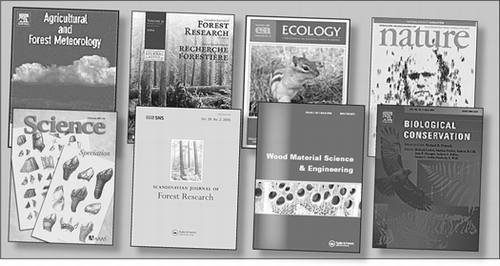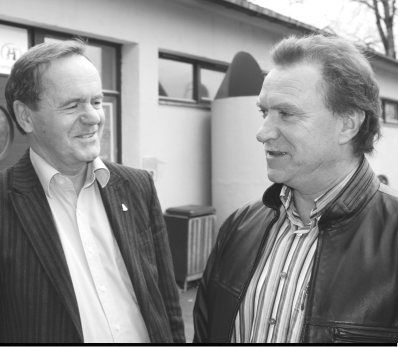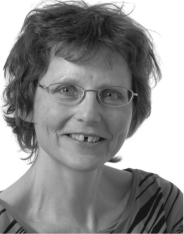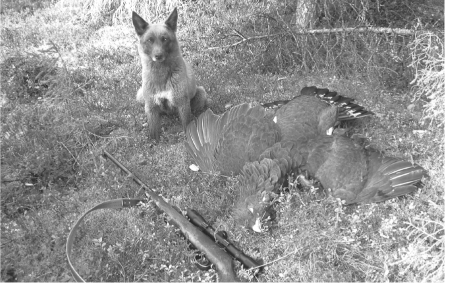
Publication pays off
“Publish or perish” is the mantra that drives many researchers’ careers. Publication scores are becoming increasingly important as governmental tools to set basic funding levels for institutes and universities.
Norway has recently launched a new system of quality scoring for the applied research institutes, and Sweden will introduce a quality index for dispersing funds in 2010. Finland uses publication points in its funding from the Academy of Finland.
Norway
The Norwegian system of resultand quality-based funding for the applied research institutes will be introduced in stages, starting in 2009, and fully implemented in 2011. The new system will pose challenges for the Norwegian institutes since part of their basic funding will be directly affected by their results.
Institutes that mainly perform public administration-related tasks will not be included under this scheme, but all of the others (51) will be affected. The institutes will receive their funding in two parts: performance-based funding and strategic programme funding.
The strategic element will vary among institutes, accounting for up to 40% of their total funding.
The performance-based basic funding will be comprised of a fi xed allocation and a variable portion (ca. 10%). The latter will be distributed according to:
-
Publication points (weight: 30 %)
-
New doctoral degrees (5 %)
-
Positions at universities (5 %)
-
Competitive grants awarded by the Research Council of Norway (10 %)
-
Grants from international bodies, such as the EU (15 %)
-
Income from commissions by domestic consumers, such as industrial sponsors (35 %)
The scores for each institute will be based on results from the preceding three years. The institutes’ indicator scores will be adjusted by a “relevance component”, calculated according to the percentage of the institute's R&D income that is subject to competition.
Publication points
Points will be awarded for peerreviewed publications, hence (for instance) internal reports will not merit any points. Qualifying publications will also be assigned to one of two levels, the higher (level 2) being reserved for publications in high-impact media (as defi ned by boards to be established). One of the targeted aims for the policy is for about 20% of publications to warrant assignation to level 2.
The system will be new to the research institutes, but the Norwegian universities have been subject to a similar system since 2002. Their funding is divided into basic, education and research components. The research component comprises 15–16% of the total funding, and is dispersed according to almost identical quality criteria to those to be applied to the institutes.
Sweden
A Swedish government bill of 2008 presented a new model for distributing research and education funds amongst universities, based on quality indicators and numbers of full-time students. Basic funding, set according to the number of students hosted, will guarantee a minimum level of fi nancing for all universities. However, quality indicators, such as levels of external funding, publications and citations, will provide the basis for distributing further research funds. The publications and citations indicator will rely on information obtained from Web of Science. In order to treat different research areas equitably, the indicator will be more highly weighted for publications related to fi elds that traditionally generate fewer scientifi c publications, e.g. arts and social science.
Norwegian comments:
Publications skills in focus
The new system was discussed at a meeting in Ås in October 2008. Nils Vagstad, research director at Bioforsk, stressed that there is no confl ict between publishable scientifi c research and consultancy work. The institute is facing increased domestic and international competition. Thus, both the institute and affi liated researchers must raise their profi les.
Currently, the institute generates ca. 0.5 scientifi c publications per research man-year, but productivity in this respect varies substantially among the researchers (ca. 20% of the researchers contribute ca. 70% of the publication points).
Bioforsk is now raising the importance of publications in its strategic program via several measures, such as improving the writing skills of its researchers and introducing internal referees. There will also be rewards for the research group that obtains the highest publication scores.
Arne Bardalen, director of Skog & Landskap, highlighted the importance of the applied institutes in providing knowledge, noting that if the government requires inputs for an investigation an institute may be asked to supply quality-assured information very rapidly. Thus, it is essential for the institutes’ results to be regularly peer-reviewed.
Skog & Landskap currently generates 0.65 publications/research man-year, but the aim is to raise this output. The institute has started to formulate a new research strategy, and publication rates will be important considerations.
Arne Bardalen, director of Skog & Landskap, and Nils Vagstad, research director at Bioforsk, want to raise the production of scientifi c publications in their institutes. Photo: Mats Hannerz

SNS board member honorary doctor
Professor Niels Ehlers Koch has been awarded a honorary doctorate at a ceremony at the Faculty of Forest Sciences, SLU, Uppsala, in October 2008. Prof. Koch was awarded for his extraordinary contribution to forest science, and his efforts to strengthen international and Nordic cooperation.
Prof. Koch, who has a research background in forest policy, has established a successful forestry research program in Denmark and has expanded the defi nition of forest research to include aspects of urban forestry and forest-based recreation.
He has long been engaged in IUFRO (the International Union of Forest Research Organizations), of which he is currently vice-president.
He has also represented Denmark on the Board of SNS (Nordic Forest Research Committee) since 1991.
Female forest owners need tailored forest services
Women need to be better integrated in “the forest world”.
Women forest owners are the focus of a new doctoral dissertation from Norway, in which anthropologist Gro Follo from the Centre for Rural Research (Bygdeforskning) explores Norwegian family forestry, and gender-based differences amongst forest owners and their management activities.
“To be a forest owner and part of the “forest world” requires competence, a lot of competence”, says Gro Follo. “Knowledge of the status and management requirements of one's forest, relevant regulations and practices, and issues related to nature conservation”.
Women forest owners have less competence in these respects. Gro Follo found male forest owners to be more confi dent in their knowledge of timber prices and more readily able to describe aspects of their properties. They were also more familiar with courses, subsidies, regulations and useful contacts regarding forestry measures.
A consequence of the lower competence is a higher need for women owners to use trusted advisors.
Integration possible
Gro Follo concludes from her fi ndings that the forest sector needs to tailor the available services more fully according to the needs of forest owners’ varying levels of competence. More sensitive services in this respect would provide greater opportunities for female forest owners to participate more fully in Norwegian forestry, and thus become more fully integrated in the “forest world”.
Contact: [email protected]
Examples of differences in forest competence between Norwegian women (W) and men (M), in terms of percentages giving indicated responses

Wild grouse species, such as the capercaillie, are important game resources for hunting tourism in the forests of Scandinavia. Photo: Vidar Segerström
Project North Hunt – sustainable hunting tourism
The project North Hunt is developing sustainable hunting tourism enterprises in northern Europe. The project will continue until 2010.
Hunting tourism in northern Europe has a development potential that has not yet been fully realized. It can create work opportunities in small businesses and contribute to economic development in rural areas. The provision of hunting opportunities and guides can be combined with the saleof accommodation, meals, transport, and side activities for family members who do not participate in the hunting.
To promote the growth of the hunting tourism sector, it is important to develop social acceptance, and understanding among land-owners, local hunters, indigenous peoples, and government authorities. Competence in marketing and good business practices will be needed in the companies involved. It is also important to monitor and manage the game resources.
“Northern brand”
The project is based in Finland, Sweden, Iceland, and Scotland. Organizations in Newfoundland and Labrador are also participating. The partners are governmental organizations, research bodies, and industry-related organizations. The project will work in close contact with local companies, and with organizations that can help in reducing obstacles for entrepreneurs.
The business concepts will be based on the hunting culture of northern Europe. The target species vary between countries, but in northern Scandinavia moose and grouse are important.
The partners will work together to examine possibilities for developing a “Northern brand” of hunting tourism.
The project is partly EU-fi nanced through the Northern Periphery Programme.
Contact: Göran Sjöberg, SLU, [email protected]

The Nordic countries use 1 m 3 wood per capita and year, compared to 0.2 m 3 in Europe. If the rest of Europe raised wood consumption to Nordic levels carbon emissions would be reduced by ca. 200 Mt per year. The photo shows multi-storey wooden buildings wood in Växjö, Sweden. Photo: Mats Hannerz.
Increased use of wood mitigates climate change
Forestry and related industrial sectors can play important roles in mitigating the effects of increased CO2 levels, by:
-
sequestrating CO2 in forest biomass
-
increased use of forest-based bioenergy resources
-
material substitution in the woodconsuming sectors, especially the construction sector.
A number of studies show that substantial climate change mitigation can be achieved by each of these means. However, there is a lack of studies addressing the integrated effects of forest management and substitution strategies.
The SNS-sponsored project “Climate impacts of increased wood use in the construction sector – towards an integrated modelling framework” had three objectives: to assess the climatic effects of increasing wood use in housing construction, to evaluate the utility of an integrated modelling framework, and to suggest improvements to current or proposed strategies.
Four scenarios
Four scenarios for wood consumption in European house building were analysed and compared: a base scenario, based on current prognoses of wood utilization, and scenarios in which wood replaced energydemanding materials, such as steel and concrete, in house constructions to varying degrees.
Two realistic scenarios indicated that emissions in the European construction sector could be reduced by 4–10 Mt carbon per year by 2030. Another, rather extreme scenario resulted in a reduction of 200 Mt carbon a year. This was based on the assumption that Europe-wide consumption of sawn wood would increase from 0.2 m3 per capita to 1 m3, corresponding to current consumption levels in the Nordic countries.
To get a full picture, the resulting changes in carbon stocks in the forest ecosystems should have been assessed. However, this was not possible because the models applied did not interact consistently across different levels. Thus, the project has identifi ed several aspects that need to be improved to raise the overall coherence of the modelling of the highly complex interactions involved.
The project was a cooperation between universities and institutes in Sweden (SLU, Mid Sweden University), Finland ( METLA, University of ), Helsinki, VTT) and Norway (UMB, Norsk Treteknisk Institutt).
Project leader and contact: Professor Ljusk-Ola Eriksson, SLU. [email protected]
A summary of the fi nal report will be posted at: www.nordicforestresearch.org
